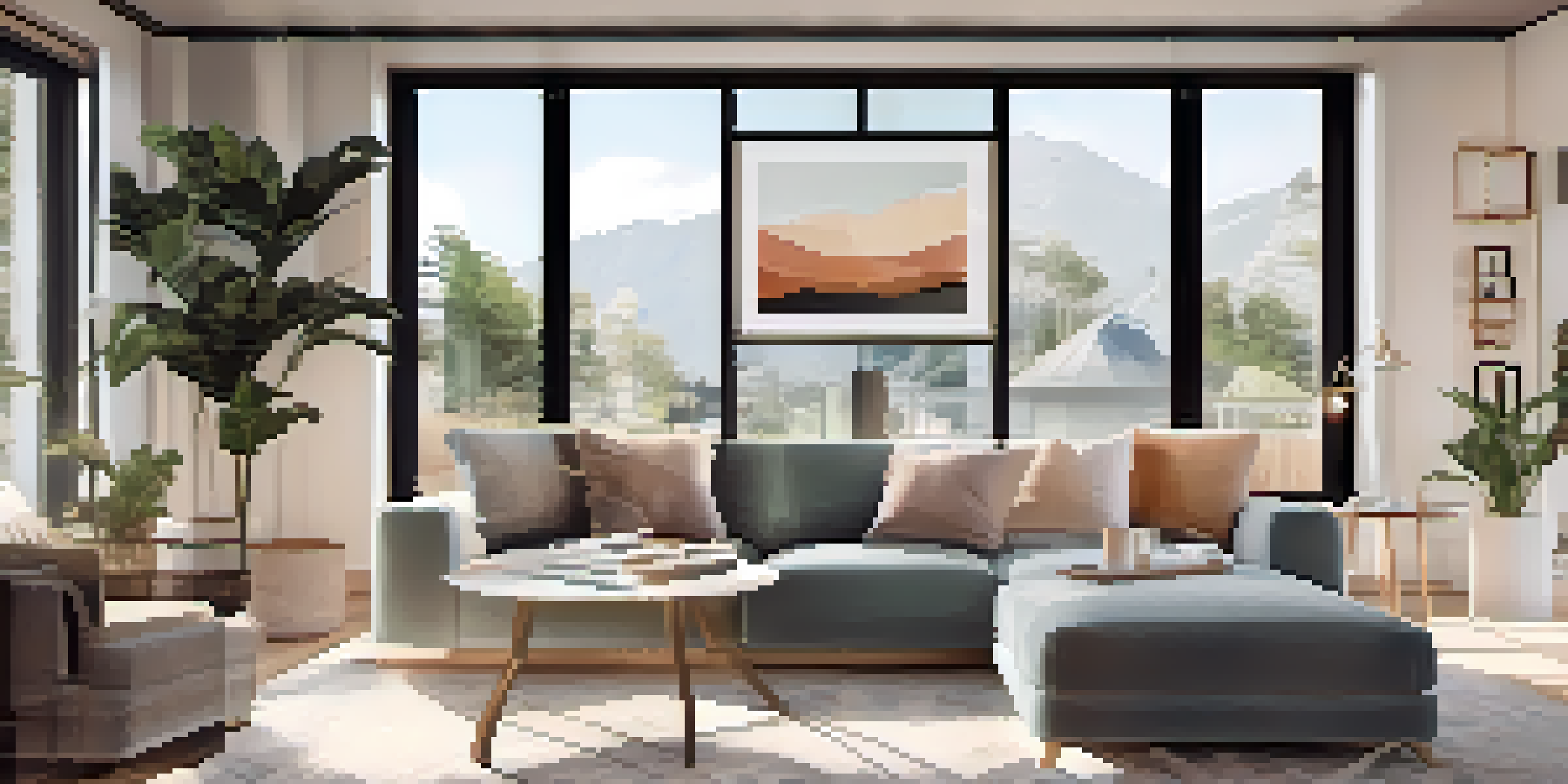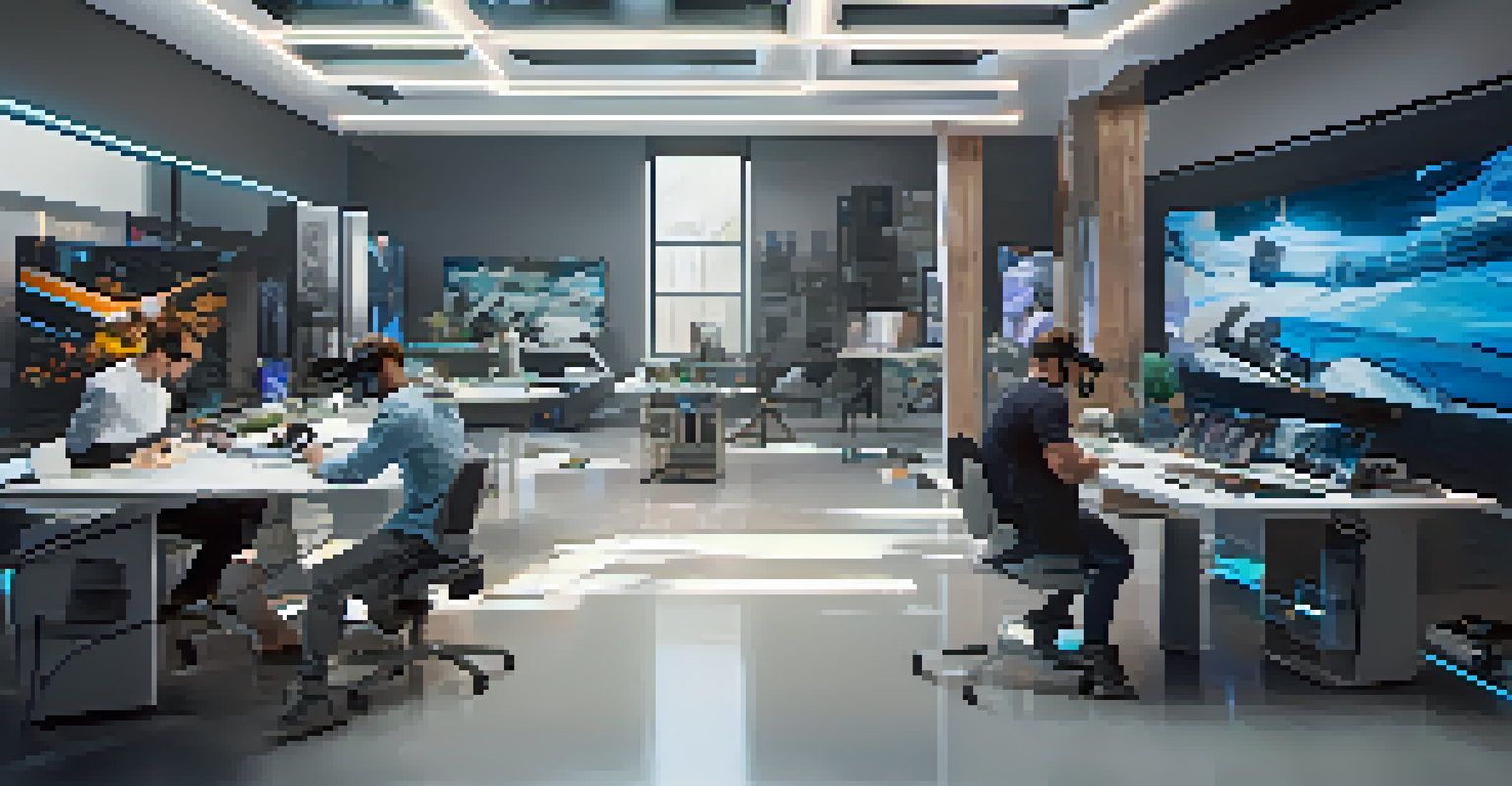Virtual Reality: Revolutionizing Home Design Experiences

What is Virtual Reality in Home Design?
Virtual reality (VR) is an immersive technology that allows users to experience a computer-generated environment as if they were physically present. In home design, VR creates a 3D space where designers and clients can visualize architectural elements and interior layouts. This shift from traditional blueprints to interactive experiences makes the design process more engaging and intuitive.
Virtual reality is not just a tool for visualization; it's a new way of experiencing the design process.
Imagine walking through your future home before it’s even built. With VR, clients can don a headset and step inside a virtual version of their space. This not only helps in visualizing scale and proportion but also allows for real-time changes, leading to a more collaborative design process.
By integrating VR into the design phase, architects and homeowners can communicate more effectively, reducing misunderstandings and aligning visions right from the start. It's a game-changer that brings dreams to life in ways that were previously unimaginable.
Enhancing Client Engagement with VR
One of the standout benefits of using VR in home design is the heightened level of client engagement it fosters. Clients can explore various design choices and layouts, making the process feel more like a partnership than a transaction. This interactive experience helps them feel more connected to the project.

For example, a family can walk through different kitchen layouts, experimenting with colors, materials, and spatial arrangements. This hands-on involvement not only makes decision-making easier but also instills confidence in the choices made. Clients are more likely to feel satisfied with the final outcome when they can visualize their preferences in such a dynamic way.
VR Enhances Client Engagement
Virtual reality fosters a collaborative design experience, allowing clients to explore and visualize their choices in real-time.
Furthermore, engaging clients in this manner often leads to valuable feedback. Designers can make necessary adjustments on the spot, which ultimately streamlines the entire design process and enhances the final result.
Cost-Effectiveness of Virtual Reality Design
While it may seem that incorporating VR into home design increases costs, it can actually lead to significant savings. By visualizing the design in a virtual environment, clients can identify potential issues before construction begins. This early detection helps avoid costly changes and delays later on.
The future belongs to those who believe in the beauty of their dreams.
For instance, if a client realizes that a proposed layout feels cramped, they can quickly adjust it in VR instead of waiting until physical construction starts. This proactive approach minimizes the risk of expensive modifications down the line, ensuring the project stays within budget.
Additionally, the ability to present multiple design options in VR reduces the need for physical materials during the initial stages. This not only saves money but also aligns with sustainable practices by minimizing waste.
Streamlining the Design Process with VR
The traditional home design process can often be lengthy and cumbersome. Virtual reality streamlines this process by allowing for rapid prototyping and instant feedback. Designers can create and modify designs in real-time, making adjustments that reflect client preferences almost immediately.
Imagine a designer presenting a concept to a client. Instead of explaining changes verbally, they can simply adjust the design in VR while the client watches. This immediate visualization accelerates decision-making and keeps the project moving forward.
Cost Savings with VR Design
By identifying potential issues early in a virtual environment, clients can avoid costly changes and stay within budget.
Moreover, the ability to revisit the virtual model at any time means that clients can reflect on their choices without pressure. They can take their time to explore different options, ultimately leading to a more thoughtful and satisfying design process.
VR and Interior Design: A Perfect Match
Virtual reality is not just for architects; it's a fantastic tool for interior designers as well. With VR, designers can showcase how different furniture, colors, and decor elements work together in a space. This immersive experience allows clients to 'live' in their new home before making any purchases.
Picture this: a client can visualize how a bold blue sofa would complement their light beige walls in a virtual living room. They can even try out different lighting options to see how the ambiance changes throughout the day. This level of detail helps clients make informed decisions about their interior design choices.
Additionally, VR allows for experimentation without the financial commitment. Clients can test out various styles and themes in a risk-free environment, ensuring that their final selections align perfectly with their vision and lifestyle.
The Future of Home Design with VR
As technology continues to evolve, the future of home design is bright with the integration of VR. We can expect to see more advancements that make virtual experiences even more realistic and engaging. Innovations in haptic feedback and spatial audio could further enhance the immersive nature of VR.
Looking ahead, we may also see wider accessibility to VR tools for both designers and clients. As devices become more affordable and user-friendly, a broader audience will be able to participate in this transformative design experience. This democratization of technology means that more people can benefit from advanced design capabilities.
Streamlined Design Process
VR accelerates decision-making by enabling instant feedback and modifications, making the design process more efficient.
Ultimately, the future of home design is likely to be shaped by a blend of creativity, collaboration, and cutting-edge technology. Virtual reality will play a pivotal role in this evolution, making the dream of a perfect home more achievable for everyone.
Overcoming Challenges in Adopting VR
Despite its many advantages, the adoption of virtual reality in home design is not without challenges. One of the biggest hurdles is the initial investment in VR technology and training. Many designers may be hesitant to adopt something new, fearing the time and cost associated with transition.
However, as with any technological shift, the long-term benefits often outweigh the initial obstacles. Designers who embrace VR can differentiate themselves in a competitive market, offering clients an innovative experience that sets them apart. The initial investment can lead to higher client satisfaction and, ultimately, more referrals.

Moreover, ongoing advancements in VR technology mean that tools are continually becoming more accessible and user-friendly. As the industry evolves, overcoming these challenges will become easier, paving the way for a more widespread acceptance of virtual reality in home design.